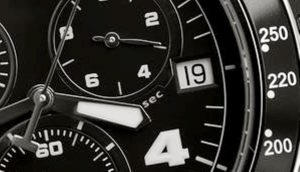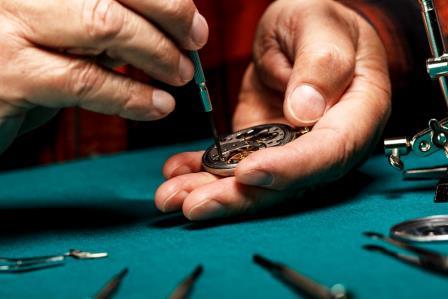Mechanical watches are masterpieces with technology handed down for centuries. They are highly-valued and loved for their character. The beauty and mechanism of this type of watch has long charmed enthusiasts for its purity and complexity at its interior machinery that has become its main quality and value.
Owning one is surely something to be proud of in itself. With it, you carry centuries-old worth of technology and fine engineering that has told time in important events of history. However, as it is a delicate timepiece, there are certain responsibilities and limitations that are bound to you in order to keep its functioning parts going and working properly in their places.
Limitations and things to avoid
You may already know some tips on taking care of your mechanical timepiece. Instead, we will discuss certain limitations and things to avoid when it comes to your watch’s welfare.
1.Avoid magnets and places with strong magnetic fields.

As your mechanical watch works by its own metallic devices, magnets and magnetic fields should be avoided at all costs. Do take notice of the areas you usually go to as they may magnetize your watch and cause it to malfunction at its slightest influence.
Magnets wreak havoc: The magnetism may cause the small hairspring inside mechanical watches to stick together, making the watch malfunction and go faster than normal or even stop altogether. This earns your watch an instant ticket to maintenance.
Although some recent watches may have different forms or types of magnetic resistance, still try to keep them away to make sure that the risk is avoided.
2.Extreme sports and movements are definitely a no-go.
Your watch moves and works in a completely different way than the usual battery-powered watches. They have their own properties and mechanical watches have their own mechanisms and specific charms. There are certain limitations as these watches need more care on movement than the battery-powered ones.
Mechanical watches are often larger than quartz watches due to the amount of tiny pieces that collectively make up the complex timepiece. It doesn’t mean that these completely limit your movements, but too much such as swinging your arms violently may shake the interiors and cause it to move around, either making a few pieces go loose or make the hands move slightly.

No sudden movements: All of this explains why mechanical watches are not the best fit for your sprints, tennis, golfing, chopping wood, and any other activities that include the violent shaking of hands. It’s not a good idea to expose this type of watch to anything that affects its accuracy and its interiors.
3.Don’t wind or use the watch insufficiently and randomly.
It is recommended to wind up your watch on a daily basis at the exact same time. This ensures that it is updated, stable, and accurate, as the watch’s movements vary day-by-day.
Mechanical watches have a mean daily rate, a measurement of the daily time depending on your movement. As there are several factors on your movement and the environment, there are losses and gains of time that the watch has. This then is told as the mean daily rate.
As the movement of time also relies on how long you wear them, wearing the timepiece for only 2 hours per day has an impact in that its accuracy may be impaired for up to a minute per day, about 5 minutes per week of continued minimal use.
Consistency is key: Wind the watch completely for accuracy on its daily rate and to make sure that the loss and gain of time is not too great to notice. Wear the watch about 8 hours a day constantly so that the watch gains enough energy from the wrist’s movements to help it keep running properly from the momentum and that the changes in time balance each other out. You can also use a watch winder to make things easier!
4.Don’t adjust the watch at late night to early morning.
Since mechanical watches rely on their own devices and gears to tell and change the date and time, they are vulnerable to damage as they shift the date at late night to early morning.

The date change mechanism of the watch usually starts late at night to early morning. In order to prevent any damage and unintended changes in time and date, do avoid adjusting the watch in any way from the time of 10pm up until around 4am. Although this is not the case for new watches, there are still a lot of watches that follow this precaution.
5.Avoid extreme temperature changes.
Generally, all watches shouldn’t be subject to extreme sudden surges in temperature as their parts would most likely be affected or damaged. Extreme hot or cold affects the timepiece’s contents and may cause some problems for immediately of in the long run.
Mechanical watches are composed of about 100 to 200 tiny metallic pieces that ultimately keep the watch moving and ticking every day. As most, if not all of these are metallic; they are very susceptible to react to sudden changes in temperature.
Expansion and contraction in extremes: Sudden changes in temperature may cause the pieces inside the watch to expand, a common reaction in metals subjected to extreme heat. On the other hand, too much cold may make it contract. A combination of both extremes spells trouble for your mechanical watch.
Avoid subjecting your watch to extremes in cold and heat to keep the watch functioning properly and accurately. As the watch is composed of tiny pieces, they require delicate care and are influenced by the temperature around you.
Each Mechanical Timepiece Is A Piece Of Art

Traditional mechanical watches are wonders in themselves. They are beautifully and masterfully crafted through generations-worth of time-tested technology that has become a classic in the watchmaking industry. Choosing this complex piece is a matter of taste and effort, not just for convenience.
With this, they are more than just simple tools with functions that tell the date and time. They are small, complicated, and mechanical art pieces that are manifestations of centuries old worth of craft. They are worthwhile tools that can run for decades when given the proper care and effort for their maintenance.
Related articles:
How To Get Moisture Out Of Your Watch?

Leave a Reply